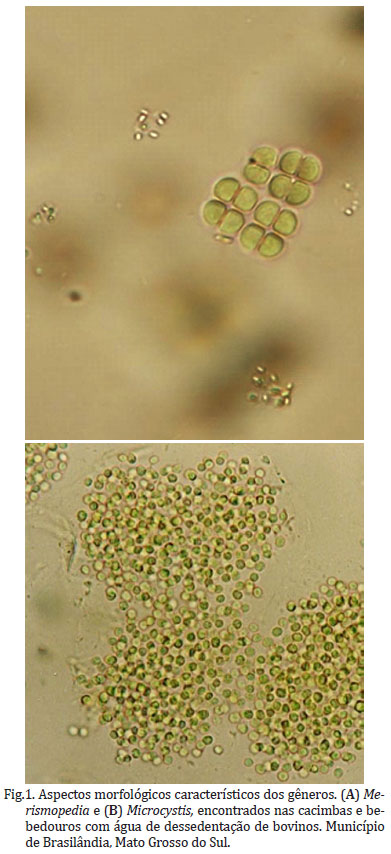In extensive animal husbandry, natural or artificial ponds allow direct access of cattle to water but result in degradation of water quality and in increased health risks. Under such circumstances eutrophication occurs and consequently algal bloom, among them toxigenic cyanobacteria. The present study aimed to report the occurrence of cyanobacteria in the drinking water of cattle and to describe their physical and chemical parameters, as pH, temperature and dissolved oxygen. Nineteen samples of natural ponds or water troughs formed predominantly as result of rainfall from six farms located in the Southeast and Midwest regions of Brazil were analyzed for the presence of cyanobacteria, and pH, temperature and dissolved oxygen was measured. Microcystis and/or Merismopedia were detected in two ponds; one of them was covered with intense flowering. The values of pH, temperature and dissolved oxygen in 19 collections were pH 7.2-9.7, 31-34ºC and 7.8-30mg/l respectively. Also non-pathogenic algae of several genera were detected besides the occurrence or not of cianogenics. Under these conditions, the common practices of drinking water supply for extensively raised cattle and the possibilities of eutrophication and cyanobacterial growth bring potential risks for animal health.
Water; livestock; eutrophication; cyanobacteria; blue-green algae



